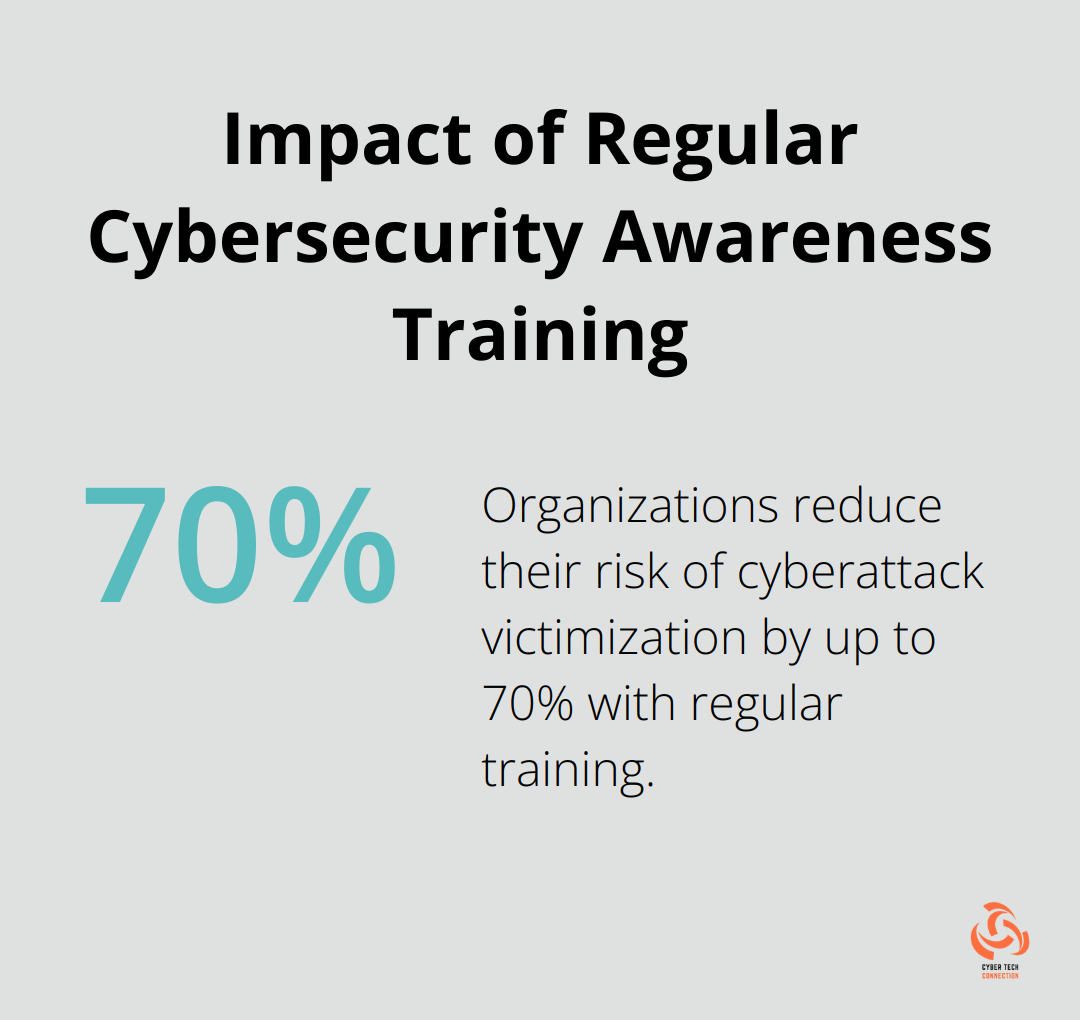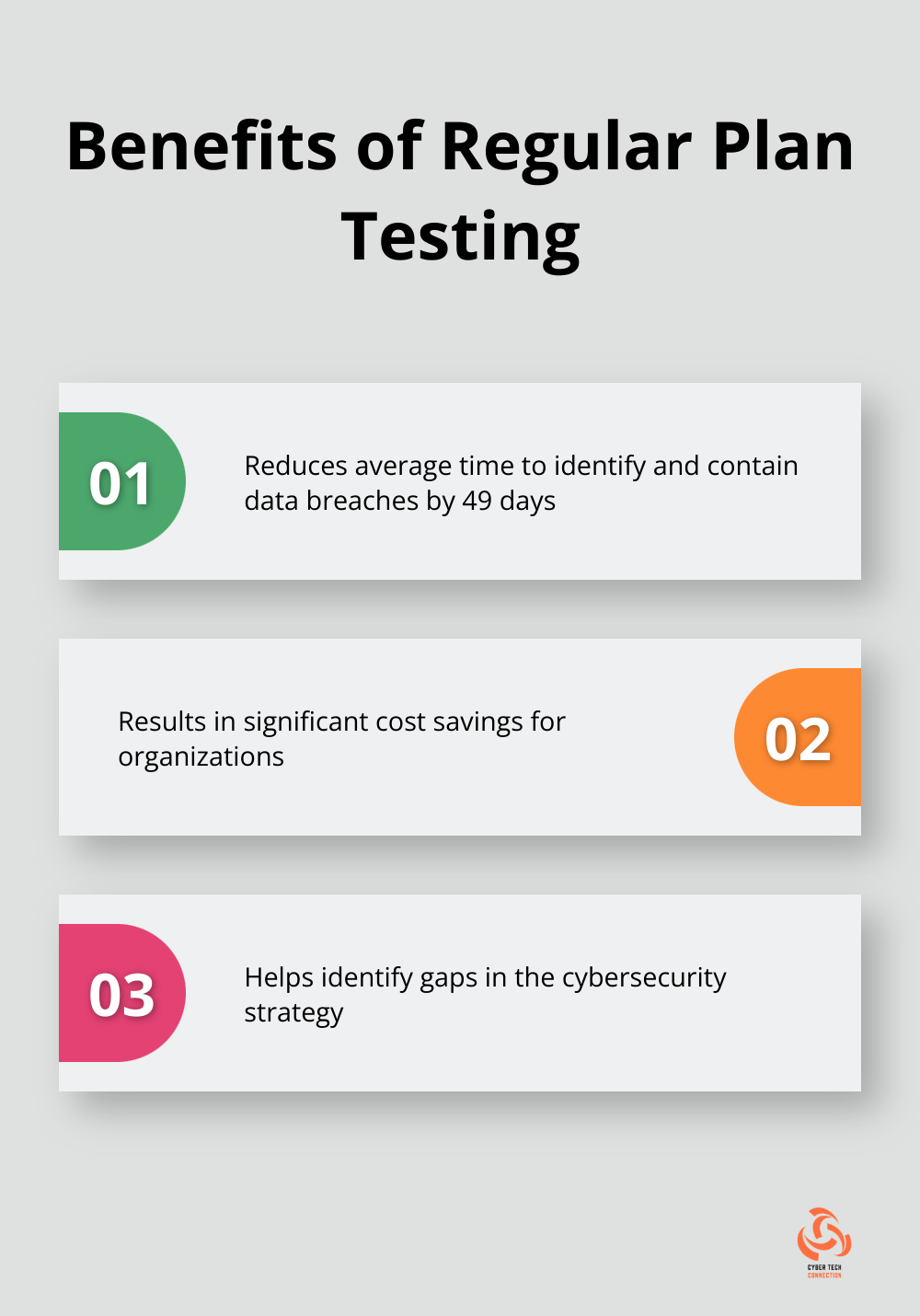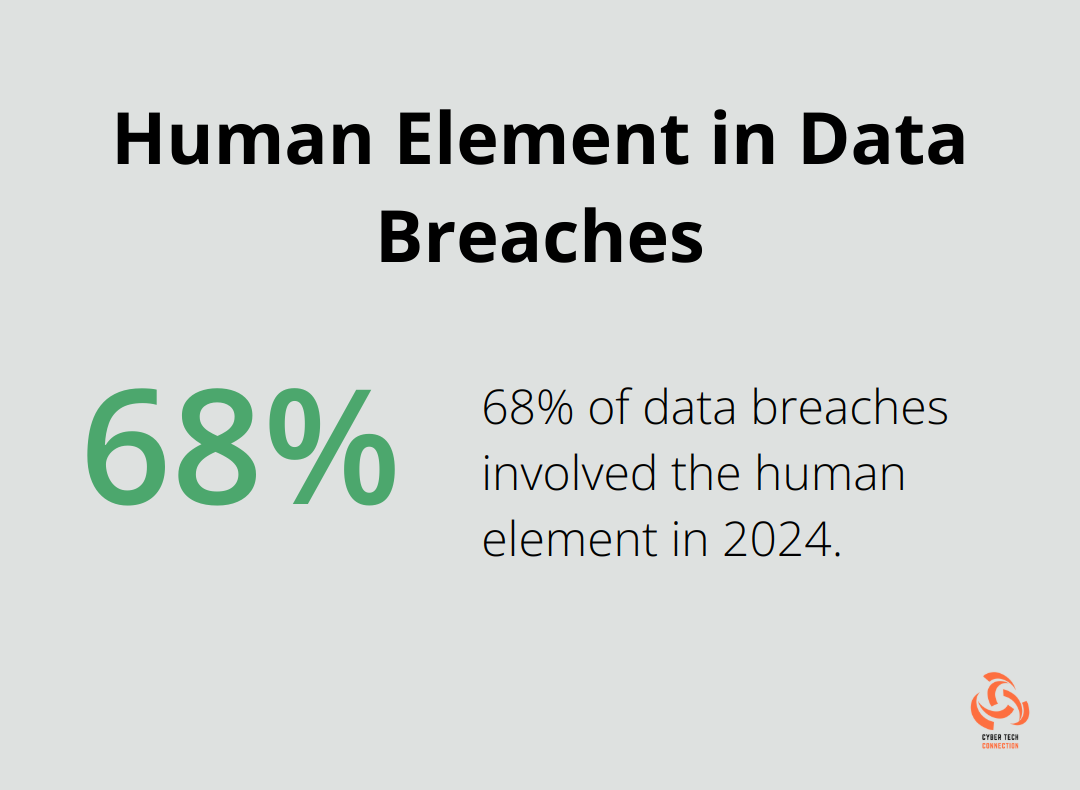This guide will walk you through the steps to create a robust plan that safeguards your business against digital threats. We’ll cover everything from risk assessment to implementation best practices, helping you build a resilient cybersecurity strategy.
What Is a Cybersecurity Business Continuity Plan?
Definition and Purpose
A cybersecurity business continuity plan serves as a strategic roadmap for organizations to maintain critical operations during and after a cyber incident. This plan is not optional; it’s a necessity in today’s digital landscape where cyber threats evolve and become more sophisticated daily.
Key Components of an Effective Plan
An effective cybersecurity business continuity plan must be comprehensive and tailored to your organization’s specific needs. It should identify critical assets, outline clear incident response procedures, and establish a decision-making chain of command for crisis situations.
Asset Inventory
A detailed inventory of all digital assets (hardware, software, and data) is a cornerstone of the plan. This inventory helps prioritize protection and recovery efforts in case of an incident. A 2023 Ponemon Institute study revealed that organizations with an accurate IT asset inventory reduced data breach costs by an average of $303,000.
Incident Response Procedures
Well-defined incident response procedures are vital. These should include step-by-step instructions for threat containment, damage assessment, and recovery initiation. The National Institute of Standards and Technology (NIST) recommends annual (at a minimum) tabletop exercises to ensure team readiness for plan execution.
Distinguishing from Disaster Recovery Plans
While disaster recovery plans focus on restoring IT systems and data post-incident, cybersecurity business continuity plans aim to keep businesses operational during an incident. This distinction is critical, as IBM’s study found the global average cost of a data breach reached $4.88 million in 2024. A robust plan can significantly reduce these costs through faster recovery and maintaining essential operations.
The Importance of Employee Training
Employee training is an often-overlooked yet critical aspect of cybersecurity business continuity planning. Your plan’s strength depends on your weakest link, which is often human error. Regular training sessions on cybersecurity best practices, phishing awareness, and incident response procedures are essential.
Organizations that conduct regular cybersecurity awareness training for employees reduce their risk of cyberattack victimization by up to 70% (according to Ponemon Institute data).

As we move forward, it’s important to understand the steps involved in creating a robust cybersecurity business continuity plan. Let’s explore the process of conducting a comprehensive risk assessment, which forms the foundation of an effective plan.
How to Build a Robust Cybersecurity Business Continuity Plan
Risk Assessment: The Foundation of Your Plan
Start with a thorough risk assessment. Identify potential cyber threats specific to your industry and organization. Use tools like the NIST Cybersecurity Framework to guide your assessment. A 2023 Ponemon Institute study found that organizations conducting regular risk assessments reduced their average data breach cost by $235,000.
Focus on your critical business functions and assets during the assessment. These elements, if compromised, would cause the most significant disruption to your operations. Prioritize the protection of these assets in your plan.
Developing Robust Incident Response Procedures
After identifying your risks and critical assets, create detailed incident response procedures. Outline step-by-step actions for different types of cyber incidents. Include specific roles and responsibilities for your team members.
A key component of your incident response should be clear communication protocols. Establish a decision-making chain of command for crises and define how to share information both internally and externally. A 2023 IBM study revealed that organizations with an incident response team and regularly tested plans saved an average of $2.66 million in breach costs compared to those without.
Implementing Effective Data Backup and Recovery Strategies
Data backup and recovery are essential elements of any cybersecurity business continuity plan. Implement a 3-2-1 backup strategy: keep three copies of your data, on two different types of media, with one copy stored off-site. Cloud-based backup solutions can provide an additional layer of protection and ease of recovery.
Test your backup and recovery processes regularly to ensure they work as intended. A 2023 Veeam report found that 76% of organizations had at least one backup failure in the past year, highlighting the importance of frequent testing.
Regular Testing and Updating: Keeping Your Plan Relevant
Your cybersecurity business continuity plan should be a living document. Test and update it regularly to reflect new threats and changes in your business environment. Conduct tabletop exercises and full-scale simulations at least annually to identify gaps in your plan.
A 2023 Ponemon Institute study showed that organizations testing their plans regularly reduced the average time to identify and contain a data breach by 49 days (resulting in significant cost savings).

Employee Training and Awareness
Employee training is a critical aspect of cybersecurity business continuity planning. Your plan’s strength depends on your weakest link, which is often human error. Conduct regular training sessions on cybersecurity best practices, phishing awareness, and incident response procedures.
Organizations that conduct regular cybersecurity awareness training for employees reduce their risk of cyberattack victimization by up to 70% (according to Ponemon Institute data).
The next step in creating an effective cybersecurity business continuity plan involves implementing best practices. Let’s explore how to put your plan into action and ensure its ongoing effectiveness.
Implementing Best Practices
To ensure the effectiveness of your cybersecurity business continuity plan, consider starting a cybersecurity consulting business to stay updated on the latest industry trends and best practices. This can provide valuable insights and help you maintain a competitive edge in the ever-evolving cybersecurity landscape.
How to Implement Your Cybersecurity Business Continuity Plan
Employee Training and Role Assignment
Start your implementation by training employees on the plan and their specific roles. Human error remains a leading cause of security breaches. The 2024 Verizon Data Breach Investigations Report found that 68% of breaches involved the human element. Schedule regular training sessions that cover cybersecurity best practices, incident response procedures, and each team member’s responsibilities during a crisis.

Assign clear roles and responsibilities to key personnel. This includes the designation of a crisis management team, incident response coordinators, and communication leads. Ensure each person understands their role and has the necessary resources to fulfill their responsibilities.
Regular Simulations and Plan Updates
Test your plan’s effectiveness through regular simulations and drills. These exercises help identify gaps in your strategy and familiarize your team with the response procedures. Organizations that regularly test their incident response plans save an average of $2.66 million in breach costs compared to those that don’t (Ponemon Institute, 2023).
Update your plan to address emerging threats. The cybersecurity landscape evolves rapidly, with new vulnerabilities and attack vectors emerging constantly. Review and update your plan at least quarterly. Incorporate lessons learned from simulations and real-world incidents into these updates.
Integration with Business Strategy
Align your cybersecurity business continuity plan with your overall business strategy. This integration ensures that your cybersecurity efforts support your business objectives and that you allocate resources effectively. Involve key stakeholders from various departments in the planning process to gain diverse perspectives and ensure buy-in across the organization.
IT Collaboration
Work closely with your IT and security teams. These professionals have the technical expertise to implement and maintain the necessary security measures. Schedule regular meetings between business continuity planners and IT staff to identify potential vulnerabilities and develop effective mitigation strategies.
Cloud-Based Solutions
Consider cloud-based solutions to enhance your plan’s resilience. Cloud services offer scalability, flexibility, and often improved security measures. They can provide quick access to critical data and applications during a crisis, minimizing downtime and potential losses. However, evaluate cloud providers carefully to ensure they meet your security and compliance requirements.
Final Thoughts
A cybersecurity business continuity plan serves as a strategic necessity in today’s digital landscape. Organizations must prepare to face potential disruptions as cyber threats evolve and become more sophisticated. The implementation of a comprehensive plan can significantly reduce the financial and reputational impact of cyber incidents.
The creation and maintenance of an effective cybersecurity business continuity plan requires ongoing commitment. Regular updates and testing ensure the plan remains relevant and effective against emerging threats. Simulations and drills help identify gaps in strategy and familiarize teams with response procedures, which saves time and resources during real crises.
Cybersecurity preparedness prioritization represents an investment in an organization’s future. It protects not only data, but also business operations, customer trust, and competitive edge. Cyber Tech Connection offers services designed to enhance cybersecurity posture and ensure business continuity in the face of digital threats (which can help organizations strengthen their defenses).

